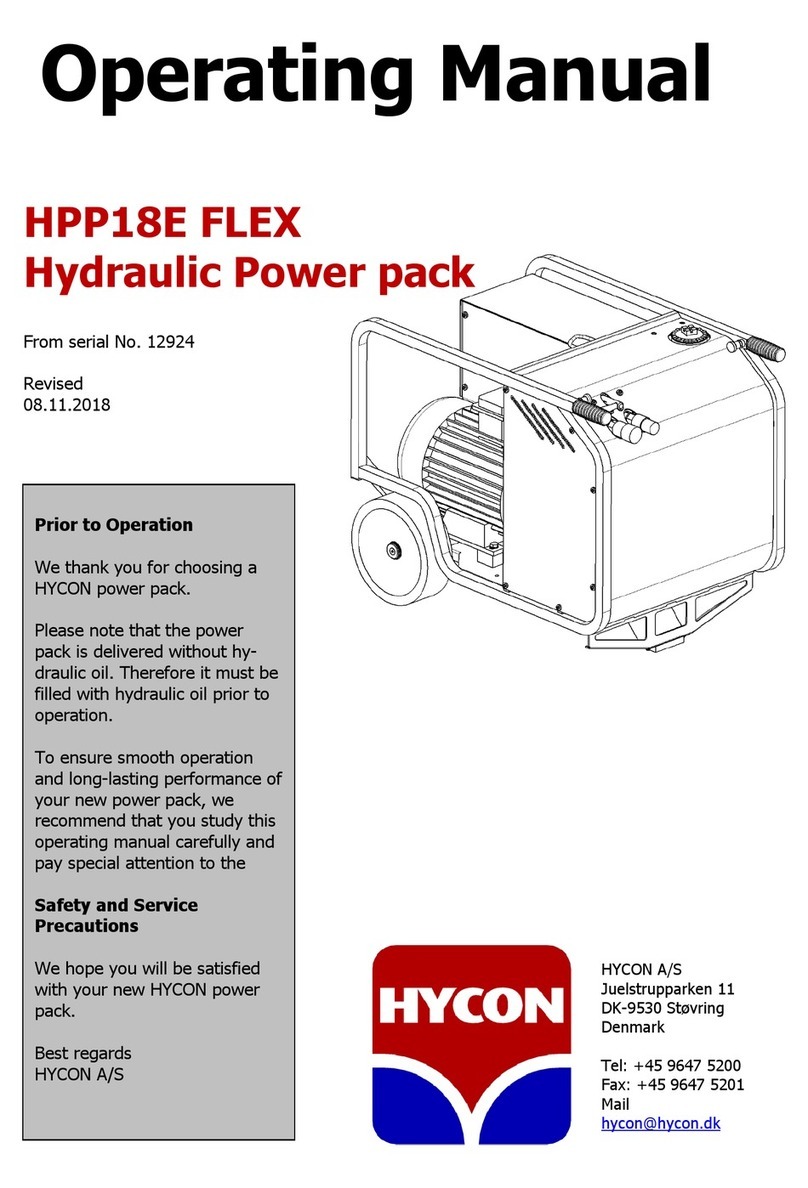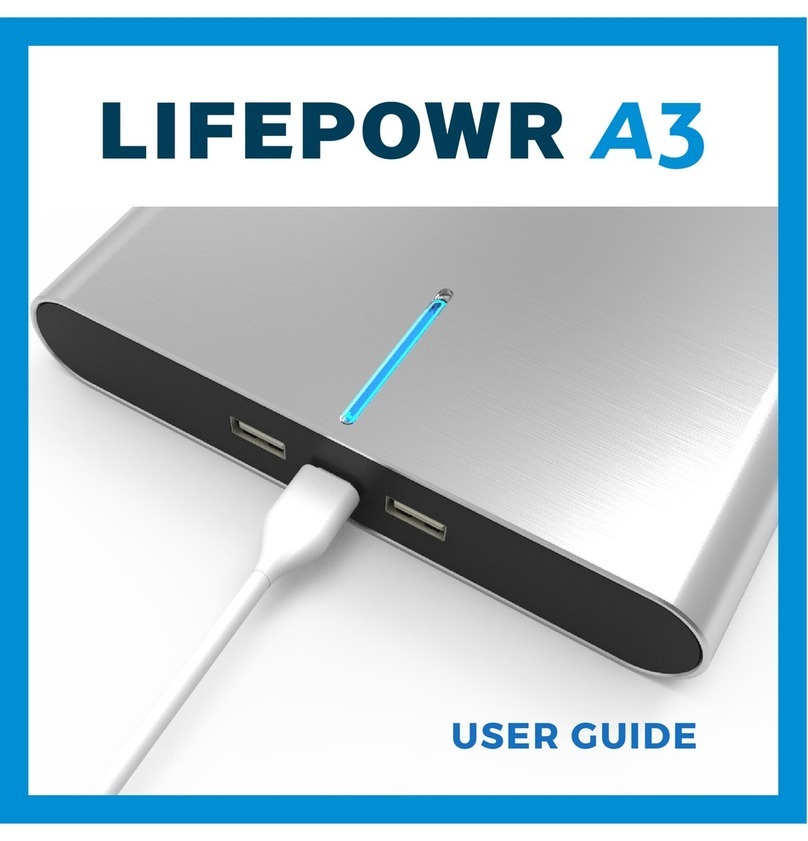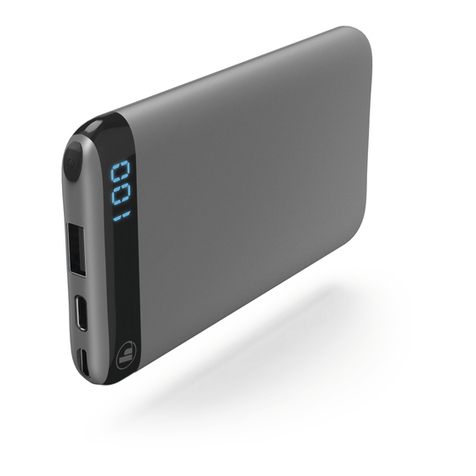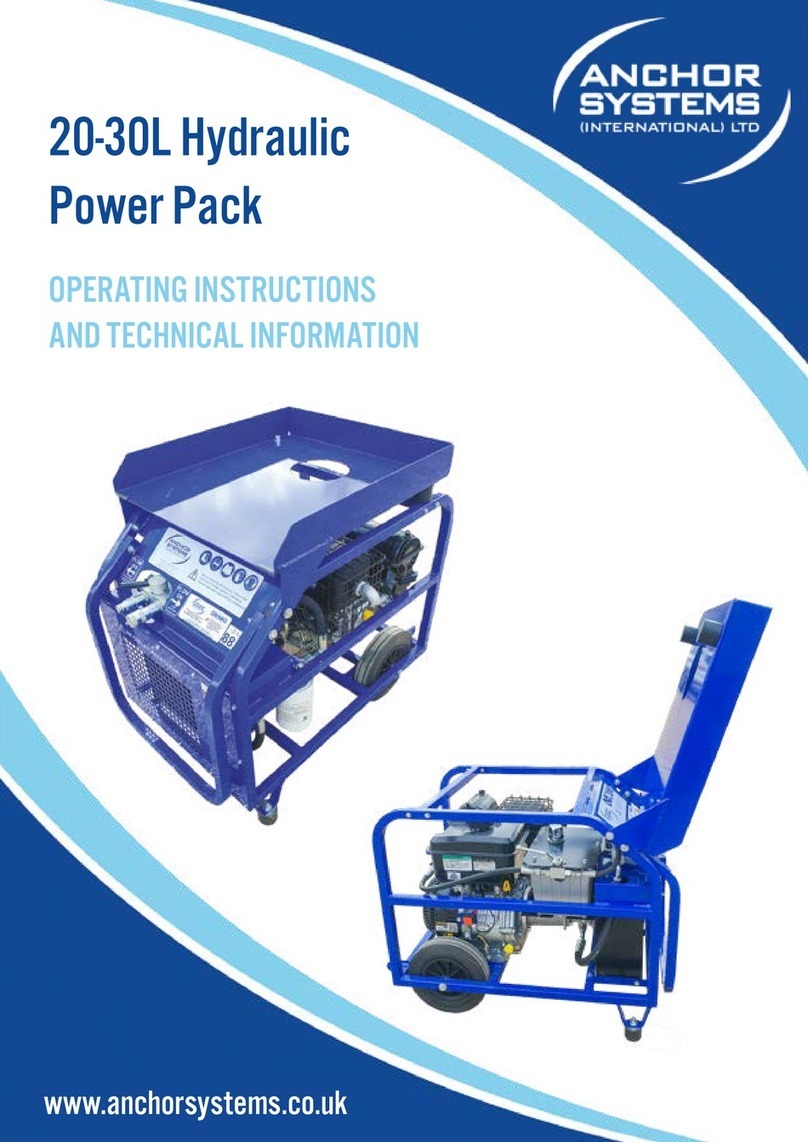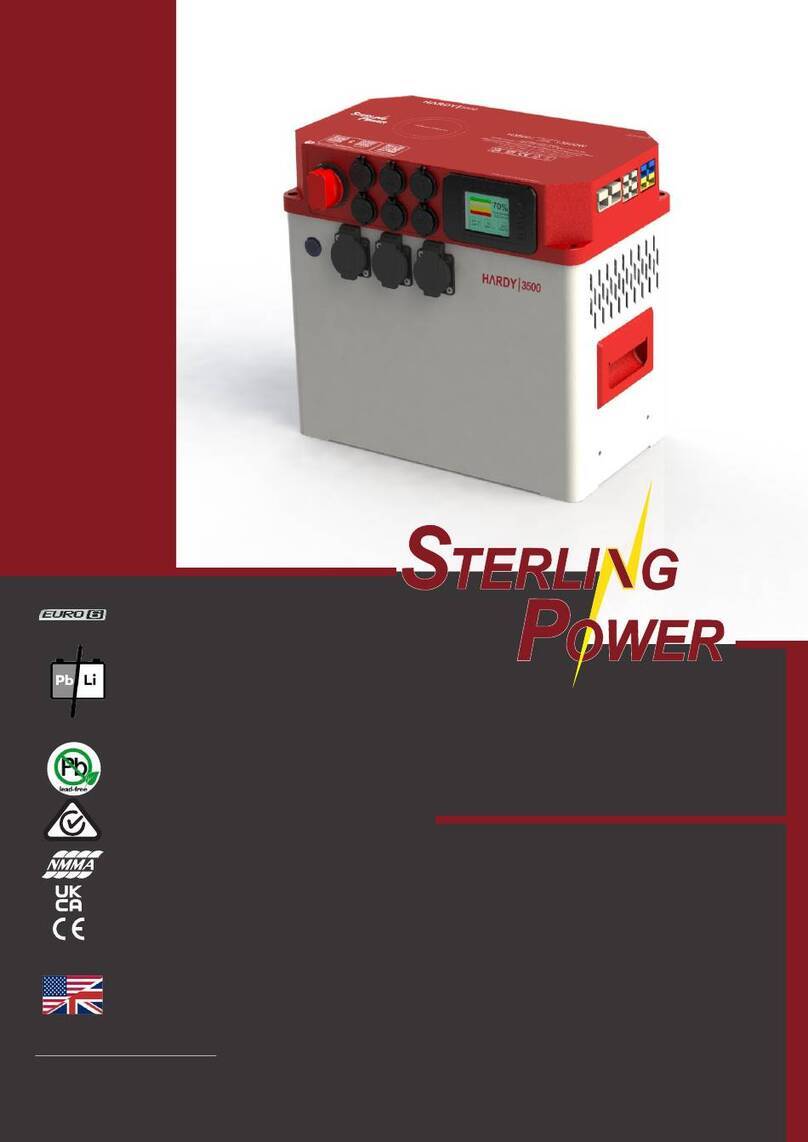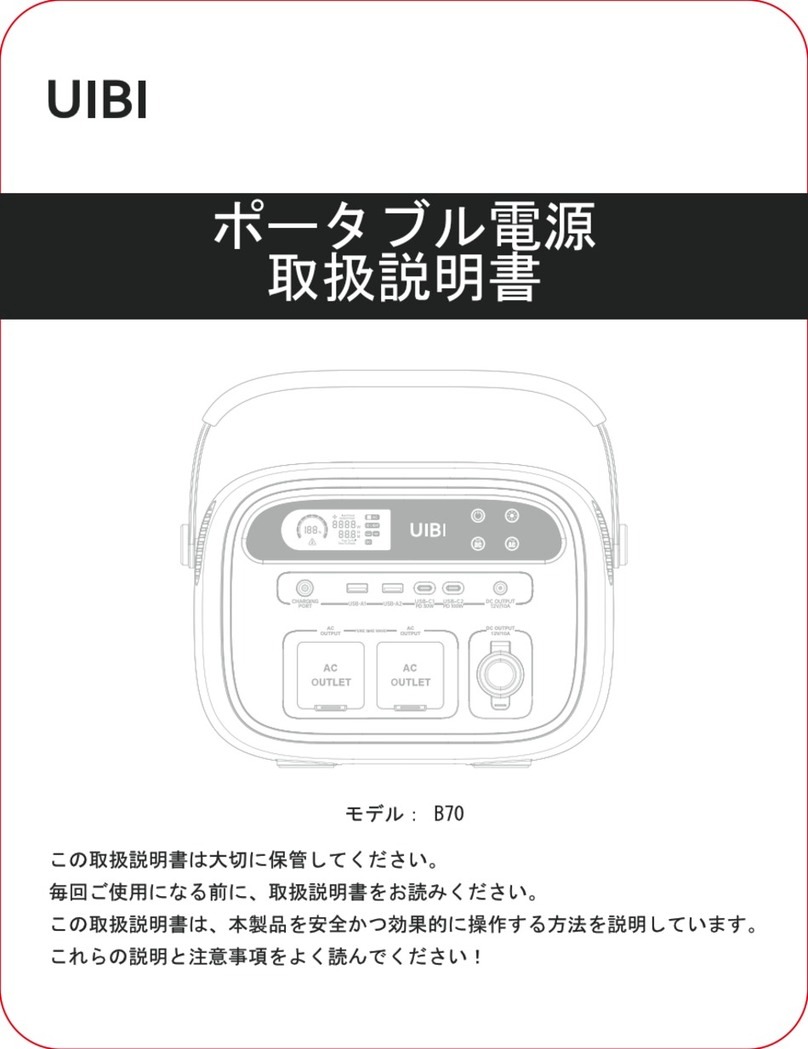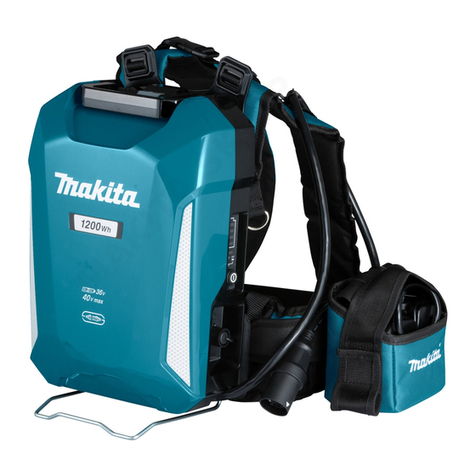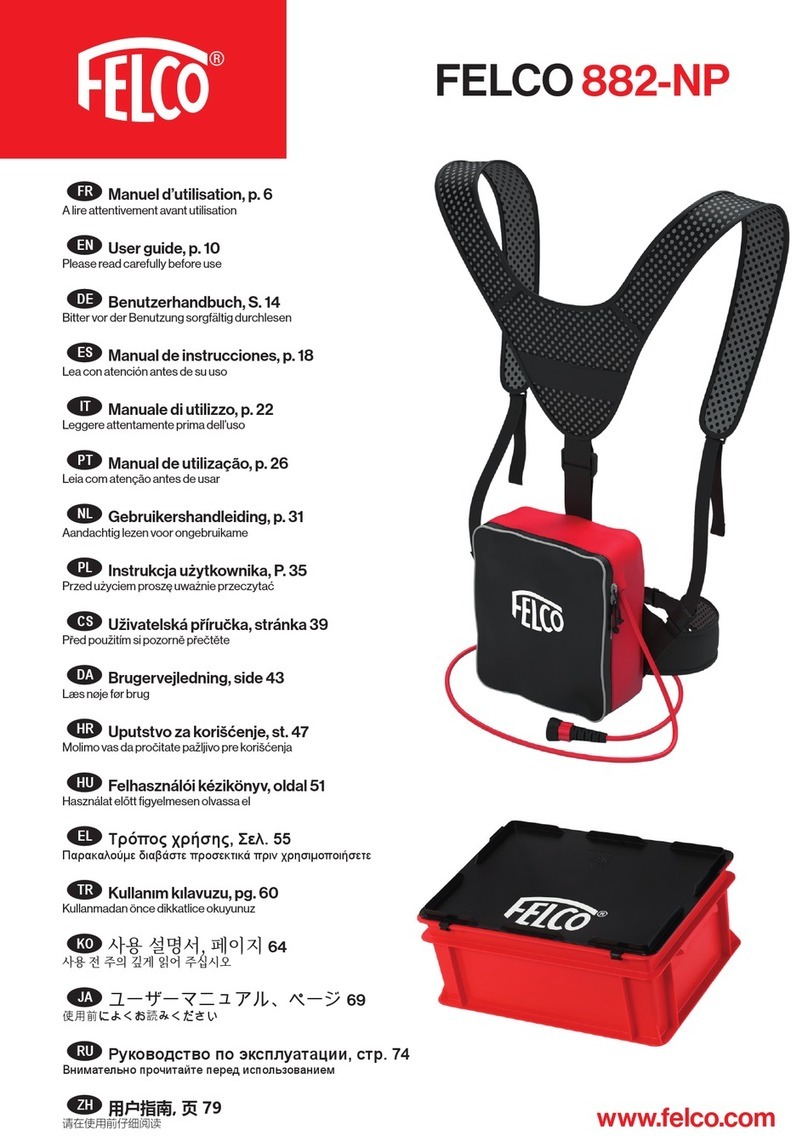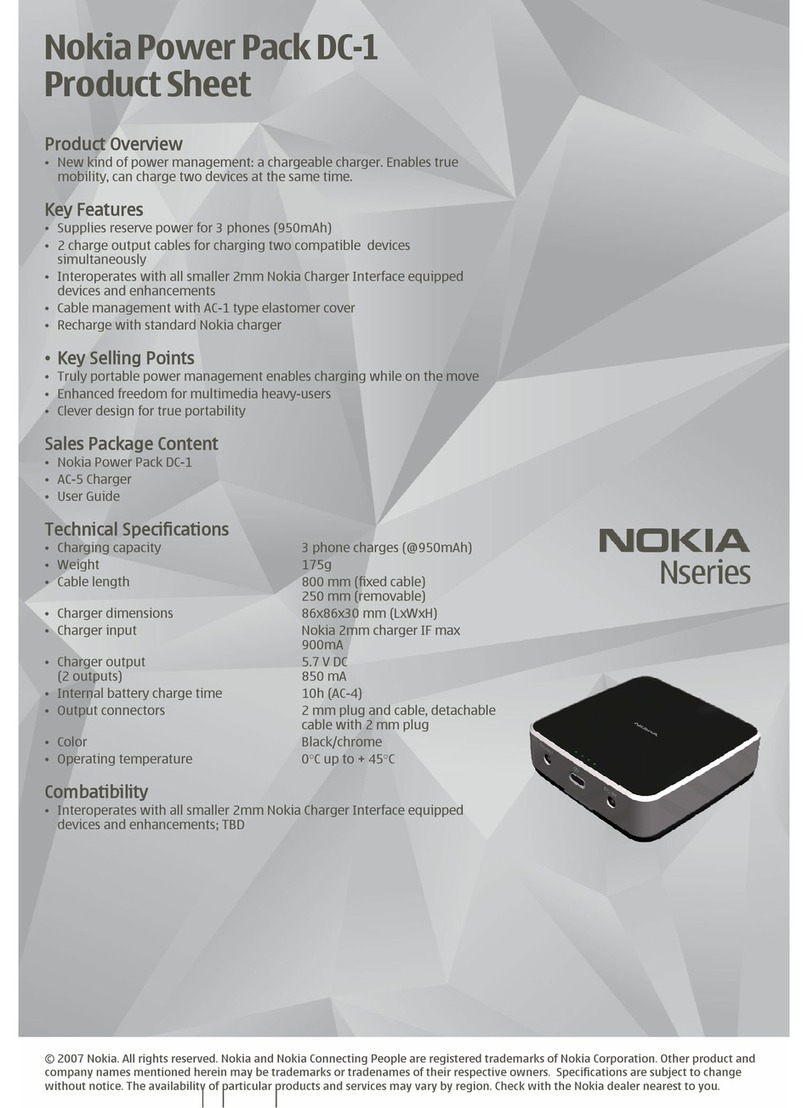Huawei UPS5000-H Series User manual

UPS5000-H-(400 kVA-800 kVA)
User Manual (100 kVA Power
Modules)
Issue 03
Date 2021-08-03
HUAWEI TECHNOLOGIES CO., LTD.

Copyright © Huawei Technologies Co., Ltd. 2021. All rights reserved.
No part of this document may be reproduced or transmitted in any form or by any means without prior
written consent of Huawei Technologies Co., Ltd.
Trademarks and Permissions
and other Huawei trademarks are trademarks of Huawei Technologies Co., Ltd.
All other trademarks and trade names mentioned in this document are the property of their respective
holders.
Notice
The purchased products, services and features are stipulated by the contract made between Huawei and
the customer. All or part of the products, services and features described in this document may not be
within the purchase scope or the usage scope. Unless otherwise specied in the contract, all statements,
information, and recommendations in this document are provided "AS IS" without warranties, guarantees
or representations of any kind, either express or implied.
The information in this document is subject to change without notice. Every eort has been made in the
preparation of this document to ensure accuracy of the contents, but all statements, information, and
recommendations in this document do not constitute a warranty of any kind, express or implied.
Huawei Technologies Co., Ltd.
Address:
Website:
Huawei Industrial Base
Bantian, Longgang
Shenzhen 518129
People's Republic of China
https://e.huawei.com
Issue 03 (2021-08-03) Copyright © Huawei Technologies Co., Ltd. i

About This Document
Purpose
This document describes the UPS in terms of its features, performance
specications, working principles, appearance, structure, installation, and
operation and maintenance (O&M).
The gures provided in this document are for reference only.
Intended Audience
This document is intended for:
● Sales engineers
● Technical support engineers
● System engineers
● Hardware installation engineers
● Commissioning engineers
● Data conguration engineers
● Maintenance engineers
Symbol Conventions
The symbols that may be found in this document are dened as follows.
Symbol Description
Indicates a hazard with a high level of risk which, if
not avoided, will result in death or serious injury.
Indicates a hazard with a medium level of risk which,
if not avoided, could result in death or serious injury.
Indicates a hazard with a low level of risk which, if
not avoided, could result in minor or moderate injury.
UPS5000-H-(400 kVA-800 kVA)
User Manual (100 kVA Power Modules) About This Document
Issue 03 (2021-08-03) Copyright © Huawei Technologies Co., Ltd. ii

Symbol Description
Indicates a potentially hazardous situation which, if
not avoided, could result in equipment damage, data
loss, performance deterioration, or unanticipated
results.
NOTICE is used to address practices not related to
personal injury.
Supplements the important information in the main
text.
NOTE is used to address information not related to
personal injury, equipment damage, and
environment deterioration.
Change History
Changes between document issues are cumulative. The latest document issue
contains all updates made in previous issues.
Issue 03 (2021-08-03)
● Added the top air exhaust feature.
● Added the S-ECO mode.
● Added the 200 V AC, 208 V AC, and 210 V AC voltage systems for the 600
kVA UPS.
● Added the 480 V AC voltage system for the 800 kVA UPS.
Issue 02 (2021-04-22)
Added the description about the 800K model.
Issue 01 (2020-11-30)
This issue is the rst release.
UPS5000-H-(400 kVA-800 kVA)
User Manual (100 kVA Power Modules) About This Document
Issue 03 (2021-08-03) Copyright © Huawei Technologies Co., Ltd. iii

Contents
About This Document................................................................................................................ ii
1 Safety Information.................................................................................................................. 1
1.1 General Safety.......................................................................................................................................................................... 1
1.2 Personnel Requirements....................................................................................................................................................... 4
1.3 Electrical Safety........................................................................................................................................................................4
1.4 Installation Environment Requirements.......................................................................................................................... 6
1.5 Mechanical Safety................................................................................................................................................................... 8
1.6 Device Running Safety........................................................................................................................................................ 10
1.7 Battery Safety......................................................................................................................................................................... 12
1.8 Others....................................................................................................................................................................................... 15
2 Product Overview..................................................................................................................16
2.1 Positioning............................................................................................................................................................................... 16
2.2 Features.................................................................................................................................................................................... 16
2.3 Application Scenarios.......................................................................................................................................................... 17
2.4 Working Principle..................................................................................................................................................................20
2.5 Working Modes..................................................................................................................................................................... 20
2.5.1 Normal Mode..................................................................................................................................................................... 20
2.5.2 Bypass Mode....................................................................................................................................................................... 21
2.5.3 Battery Mode...................................................................................................................................................................... 21
2.5.4 S-ECO Mode........................................................................................................................................................................ 22
2.5.5 Source-Share Mode...........................................................................................................................................................23
3 Product Introduction............................................................................................................ 24
3.1 Model Description................................................................................................................................................................ 24
3.2 Cabinet Description (600 kVA).........................................................................................................................................25
3.2.1 Standard Conguration................................................................................................................................................... 25
3.2.2 Bottom Cabling Conguration...................................................................................................................................... 26
3.2.3 Top Air-Flow Conguration............................................................................................................................................ 26
3.2.4 Bottom Cabling + top Air-Flow Conguration........................................................................................................ 27
3.3 Cabinet Description (800 kVA).........................................................................................................................................27
3.3.1 Standard Conguration................................................................................................................................................... 27
3.3.2 Bottom Cabling Conguration...................................................................................................................................... 29
3.3.3 Top Air-Flow Conguration............................................................................................................................................ 29
UPS5000-H-(400 kVA-800 kVA)
User Manual (100 kVA Power Modules) Contents
Issue 03 (2021-08-03) Copyright © Huawei Technologies Co., Ltd. iv

3.3.4 Bottom Cabling + top Air-Flow Conguration........................................................................................................ 30
4 Component Description....................................................................................................... 31
4.1 Power Module........................................................................................................................................................................ 31
4.2 Bypass Module....................................................................................................................................................................... 32
4.3 Control Module......................................................................................................................................................................34
4.3.1 Overview...............................................................................................................................................................................34
4.3.2 ECM........................................................................................................................................................................................ 35
4.3.3 Dry Contact Card............................................................................................................................................................... 37
4.3.4 Monitoring Interface Card.............................................................................................................................................. 39
4.4 MDU.......................................................................................................................................................................................... 44
5 Optional Components.......................................................................................................... 47
5.1 List of Optional Components............................................................................................................................................47
5.2 Dry Contact Extended Card............................................................................................................................................... 48
5.3 Backfeed Protection Card................................................................................................................................................... 50
5.4 Intelligent Detection Card..................................................................................................................................................51
5.5 Surge Protection Box........................................................................................................................................................... 54
5.6 BCB Box.................................................................................................................................................................................... 54
5.7 Ambient T/H Sensor.............................................................................................................................................................55
5.8 Bottom Cabling Cabinet..................................................................................................................................................... 56
5.9 Top Outlet Kit......................................................................................................................................................................... 57
5.10 Rear Copper Bar Protection Component.................................................................................................................... 58
6 Installation..............................................................................................................................59
6.1 Installation Preparations.................................................................................................................................................... 59
6.1.1 Installation Environment.................................................................................................................................................59
6.1.2 Installation Clearances.....................................................................................................................................................60
6.1.3 Tools and Instruments..................................................................................................................................................... 65
6.1.4 Power Cable Selection..................................................................................................................................................... 67
6.1.4.1 380 V AC/400 V AC/415 V AC Voltage System.................................................................................................... 68
6.1.4.2 200 V AC/208 V AC/210 V AC Voltage System.................................................................................................... 73
6.1.4.3 480 V AC Voltage System............................................................................................................................................75
6.1.5 Unpacking............................................................................................................................................................................ 80
6.2 UPS Cable Connection Reference.................................................................................................................................... 81
6.3 Single UPS Installation (400–600 kVA)......................................................................................................................... 82
6.3.1 Installing the UPS.............................................................................................................................................................. 82
6.3.1.1 Installing the Cabinet................................................................................................................................................... 82
6.3.1.2 Installing Cables............................................................................................................................................................. 85
6.3.2 Installing the UPS + Bottom Cabling Cabinet......................................................................................................... 88
6.3.2.1 Installing Cabinets......................................................................................................................................................... 88
6.3.2.2 Installing Cables............................................................................................................................................................. 93
6.3.3 Installing the UPS + Top Outlet Kit............................................................................................................................. 98
6.3.3.1 Installing the Cabinet................................................................................................................................................... 99
UPS5000-H-(400 kVA-800 kVA)
User Manual (100 kVA Power Modules) Contents
Issue 03 (2021-08-03) Copyright © Huawei Technologies Co., Ltd. v

6.3.3.2 Installing Cables........................................................................................................................................................... 102
6.3.4 Installing the UPS + Bottom Cabling Cabinet + Top Outlet Kit...................................................................... 102
6.3.4.1 Installing Cabinets....................................................................................................................................................... 102
6.3.4.2 Installing Cables........................................................................................................................................................... 108
6.4 Single UPS Installation (800 kVA)................................................................................................................................ 108
6.4.1 Installing the UPS............................................................................................................................................................109
6.4.1.1 Installing Cabinets....................................................................................................................................................... 109
6.4.1.2 Installing Cables........................................................................................................................................................... 112
6.4.2 Installing the UPS + Bottom Cabling Cabinet....................................................................................................... 116
6.4.2.1 Installing Cabinets....................................................................................................................................................... 116
6.4.2.2 Installing Cables........................................................................................................................................................... 121
6.4.3 Installing the UPS + Top Outlet Kit...........................................................................................................................126
6.4.3.1 Installing Cabinets....................................................................................................................................................... 126
6.4.3.2 Installing Cables........................................................................................................................................................... 131
6.4.4 Installing the UPS + Bottom Cabling Cabinet + Top Outlet Kit...................................................................... 131
6.4.4.1 Installing Cabinets....................................................................................................................................................... 132
6.4.4.2 Installing Cables........................................................................................................................................................... 137
6.5 Parallel System Installation.............................................................................................................................................137
6.6 Installing an Ambient T/H Sensor................................................................................................................................ 139
6.7 Installing Optional Rear Copper Bar Protection Components............................................................................ 140
6.8 Installing Cables for the TN-C System........................................................................................................................ 141
6.9 Connecting a Backfeed Protection Card..................................................................................................................... 142
6.10 Connecting a Remote EPO Switch............................................................................................................................. 145
6.11 Verifying the Installation............................................................................................................................................... 146
7 Single UPS Commissioning............................................................................................... 149
7.1 Powering On and Starting the UPS..............................................................................................................................149
7.1.1 Powering On the UPS.................................................................................................................................................... 149
7.1.2 Initial Startup....................................................................................................................................................................150
7.1.2.1 Obtaining Startup Password.................................................................................................................................... 150
7.1.2.2 Settings Wizard............................................................................................................................................................ 150
7.1.3 Starting the Inverter.......................................................................................................................................................152
7.1.4 Powering On Loads........................................................................................................................................................ 153
7.1.5 (Optional) Setting Parameters for the BCB Box...................................................................................................154
7.1.6 (Optional) Conguring the Bottom Cabling Cabinet......................................................................................... 154
7.1.7 (Optional) Setting the Backfeed Protection Card................................................................................................ 154
7.1.8 (Optional) Setting the Intelligent Detection Card...............................................................................................155
7.1.9 (Optional) Setting the Top Outlet Fan.................................................................................................................... 155
7.2 Shutting Down and Powering O the UPS............................................................................................................... 155
7.3 Cold-Starting the UPS Using Batteries........................................................................................................................157
7.4 Transferring to Bypass Mode Manually...................................................................................................................... 158
7.5 Setting the S-ECO Mode.................................................................................................................................................. 158
7.6 Testing Batteries..................................................................................................................................................................161
UPS5000-H-(400 kVA-800 kVA)
User Manual (100 kVA Power Modules) Contents
Issue 03 (2021-08-03) Copyright © Huawei Technologies Co., Ltd. vi

7.6.1 Lead-Acid Battery Test.................................................................................................................................................. 161
7.6.1.1 Performing a Forced Equalized Charging Test...................................................................................................161
7.6.1.2 Performing a Shallow Discharge Test...................................................................................................................162
7.6.1.3 Performing a Capacity Test...................................................................................................................................... 163
7.6.2 Lithium Battery Test....................................................................................................................................................... 164
7.6.2.1 Performing a Shallow Discharge Test...................................................................................................................165
7.6.2.2 Performing a Capacity Test...................................................................................................................................... 166
7.6.2.3 Performing a Group Capacity Test.........................................................................................................................167
7.6.3 Downloading the Test Data.........................................................................................................................................168
7.7 Transferring to Maintenance Bypass Mode............................................................................................................... 169
7.8 Transferring from Maintenance Bypass Mode to Inverter Mode.......................................................................169
7.9 T/H Sensor Settings........................................................................................................................................................... 170
7.10 Performing EPO................................................................................................................................................................ 172
7.11 Clearing the EPO State...................................................................................................................................................172
7.12 Exporting Data.................................................................................................................................................................. 173
7.13 Setting Hibernation Mode............................................................................................................................................ 174
8 Parallel System Commissioning.......................................................................................176
8.1 Starting a Parallel System............................................................................................................................................... 176
8.2 Shutting Down and Powering O a Parallel System............................................................................................. 180
8.3 Performing EPO...................................................................................................................................................................181
8.4 Isolating a Faulty UPS from a Parallel System.........................................................................................................181
8.5 Restoring an Isolated UPS in a Parallel System....................................................................................................... 182
8.6 Adding a Single UPS or Multiple UPSs to a Parallel System............................................................................... 182
8.7 Commissioning a Dual-Bus System..............................................................................................................................188
9 Routine Maintenance.........................................................................................................190
9.1 UPS Maintenance............................................................................................................................................................... 190
9.1.1 Monthly Maintenance................................................................................................................................................... 191
9.1.2 Quarterly Maintenance................................................................................................................................................. 191
9.1.3 Annual Maintenance......................................................................................................................................................192
9.2 Lead-Acid Battery Maintenance.................................................................................................................................... 192
9.2.1 Precautions for Battery Maintenance...................................................................................................................... 193
9.2.2 Monthly Maintenance................................................................................................................................................... 193
9.2.3 Quarterly Maintenance................................................................................................................................................. 194
9.2.4 Annual Maintenance......................................................................................................................................................195
10 Troubleshooting................................................................................................................ 197
11 Technical Specications...................................................................................................200
A Alarm List............................................................................................................................. 209
B Lifting Trolley.......................................................................................................................210
C Acronyms and Abbreviations........................................................................................... 212
UPS5000-H-(400 kVA-800 kVA)
User Manual (100 kVA Power Modules) Contents
Issue 03 (2021-08-03) Copyright © Huawei Technologies Co., Ltd. vii

1 Safety Information
1.1 General Safety
Statement
Before installing, operating, and maintaining the equipment, read this document
and observe all the safety instructions on the equipment and in this document.
The "NOTICE", "CAUTION", "WARNING", and "DANGER" statements in this
document do not cover all the safety instructions. They are only supplements to
the safety instructions. Huawei will not be liable for any consequence caused by
the violation of general safety requirements or design, production, and usage
safety standards.
Ensure that the equipment is used in environments that meet its design
specications. Otherwise, the equipment may become faulty, and the resulting
equipment malfunction, component damage, personal injuries, or property
damage are not covered under the warranty.
Follow local laws and regulations when installing, operating, or maintaining the
equipment. The safety instructions in this document are only supplements to local
laws and regulations.
Huawei will not be liable for any consequences of the following circumstances:
● Operation beyond the conditions specied in this document
● Installation or use in environments which are not specied in relevant
international or national standards
● Unauthorized modications to the product or software code or removal of the
product
● Failure to follow the operation instructions and safety precautions on the
product and in this document
● Equipment damage due to force majeure, such as earthquakes, re, and
storms
● Damage caused during transportation by the customer
● Storage conditions that do not meet the requirements specied in this
document
UPS5000-H-(400 kVA-800 kVA)
User Manual (100 kVA Power Modules) 1 Safety Information
Issue 03 (2021-08-03) Copyright © Huawei Technologies Co., Ltd. 1

General Requirements
● Do not install, use, or operate outdoor equipment and cables (including but
not limited to moving equipment, operating equipment and cables, inserting
connectors to or removing connectors from signal ports connected to outdoor
facilities, working at heights, and performing outdoor installation) in harsh
weather conditions such as lightning, rain, snow, and level 6 or stronger wind.
● Before installing, operating, or maintaining the equipment, remove any
conductive objects such as watches or metal jewelry like bracelets, bangles,
and rings to avoid electric shock.
● When installing, operating, or maintaining the equipment, wear personal
protective equipment such as insulation gloves, goggles, and safety clothing,
helmet, and shoes, as shown in the following gure.
● Follow the specied procedures for installation, operation, and maintenance.
● Before handling a conductor surface or terminal, measure the contact point
voltage and ensure that there is no risk of electric shock.
● After installing the equipment, remove idle packing materials such as cartons,
foam, plastics, and cable ties from the equipment area.
● In the case of a re, immediately leave the building or the equipment area,
and turn on the re alarm bell or make an emergency call. Do not enter the
building on re in any case.
● Do not stop using protective devices. Pay attention to the warnings, cautions,
and related precautionary measures in this document and on the equipment.
Promptly replace warning labels that have worn out.
● Keep irrelevant people away from the equipment. Only operators are allowed
to access the equipment.
● Use insulated tools or tools with insulated handles, as shown in the following
gure.
UPS5000-H-(400 kVA-800 kVA)
User Manual (100 kVA Power Modules) 1 Safety Information
Issue 03 (2021-08-03) Copyright © Huawei Technologies Co., Ltd. 2

● All cable holes should be sealed. Seal the used cable holes with restop putty.
Seal the unused cable holes with the caps delivered with the cabinet. The
following gure shows the criteria for correct sealing with restop putty.
● Do not scrawl, damage, or block any warning label on the equipment.
● When installing devices, use a torque wrench with a proper measurement
range to tighten bolts. Ensure that the wrench is not skewed and the torque
error does not exceed 10%.
● Do not work with power on during installation.
● Repaint any paint scratches caused during equipment transportation or
installation in a timely manner. Equipment with scratches cannot be exposed
to an outdoor environment for a long period of time.
● Before operations, ensure that the equipment is rmly secured to the oor or
other solid objects, such as a wall or an installation rack.
● Do not use water to clean electrical components inside or outside of a
cabinet.
● Do not change the structure or installation sequence of equipment without
permission.
● Do not touch a running fan with your ngers, components, screws, tools, or
boards before the fan is powered o or stops running.
UPS5000-H-(400 kVA-800 kVA)
User Manual (100 kVA Power Modules) 1 Safety Information
Issue 03 (2021-08-03) Copyright © Huawei Technologies Co., Ltd. 3

Personal Safety
● If there is a probability of personal injury or equipment damage during
operations on the equipment, immediately stop the operations, report the
case to the supervisor, and take feasible protective measures.
● To avoid electric shock, do not connect safety extra-low voltage (SELV) circuits
to telecommunication network voltage (TNV) circuits.
● Do not power on the equipment before it is installed or conrmed by
professionals.
1.2 Personnel Requirements
● Personnel who plan to install or maintain Huawei equipment must receive
thorough training, understand all necessary safety precautions, and be able to
correctly perform all operations.
● Only qualied professionals or trained personnel are allowed to install,
operate, and maintain the equipment.
● Only qualied professionals are allowed to remove safety facilities and inspect
the equipment.
● Personnel who will operate the equipment, including operators, trained
personnel, and professionals, should possess the local national required
qualications in special operations such as high-voltage operations, working
at heights, and operations of special equipment.
● Professionals: personnel who are trained or experienced in equipment
operations and are clear of the sources and degree of various potential
hazards in equipment installation, operation, maintenance
● Trained personnel: personnel who are technically trained, have required
experience, are aware of possible hazards on themselves in certain operations,
and are able to take protective measures to minimize the hazards on
themselves and other people
● Operators: operation personnel who may come in contact with the
equipment, except trained personnel and professionals
● Only professionals or authorized personnel are allowed to replace the
equipment or components (including software).
1.3 Electrical Safety
Grounding
● For the equipment that needs to be grounded, install the ground cable rst
when installing the equipment and remove the ground cable last when
removing the equipment.
● Do not damage the ground conductor.
● Do not operate the equipment in the absence of a properly installed ground
conductor.
● Ensure that the equipment is connected permanently to the protective
ground. Before operating the equipment, check its electrical connection to
ensure that it is securely grounded.
UPS5000-H-(400 kVA-800 kVA)
User Manual (100 kVA Power Modules) 1 Safety Information
Issue 03 (2021-08-03) Copyright © Huawei Technologies Co., Ltd. 4

General Requirements
Use dedicated insulated tools when performing high-voltage operations.
AC and DC Power
D ANGER
Do not connect or disconnect power cables with power on. Transient contact
between the core of the power cable and the conductor will generate electric arcs
or sparks, which may cause re or personal injury.
● If a "high electricity leakage" tag is attached on the equipment, ground the
protective ground terminal on the equipment enclosure before connecting the
AC power supply; otherwise, electric shock as a result of electricity leakage
may occur.
● Before installing or removing a power cable, turn o the power switch.
● Before connecting a power cable, check that the label on the power cable is
correct.
● If the equipment has multiple inputs, disconnect all the inputs before
operating the equipment.
● A circuit breaker equipped with a residual current device (RCD) is not
recommended.
● A damaged power cable must be replaced by the manufacturer, service agent,
or professionals to avoid risks.
● High voltage operations and installation of AC-powered facilities must be
performed by qualied personnel.
Cabling
● When routing cables, ensure that a distance of at least 30 mm exists between
the cables and heat-generating components or areas. This prevents damage
to the insulation layer of the cables.
● Do not route cables behind the air intake and exhaust vents of the
equipment.
● Ensure that cables meet the VW-1 or ZB ame spread rating requirements or
higher.
● Bind cables of the same type together. When routing cables of dierent types,
ensure that they are at least 30 mm away from each other.
● If an AC input power cable is connected to the cabinet from the top, bend the
cable in a U shape outside the cabinet and then route it into the cabinet.
● When the temperature is low, violent impact or vibration may damage the
plastic cable sheathing. To ensure safety, comply with the following
requirements:
– Cables can be laid or installed only when the temperature is higher than
0°C. Handle cables with caution, especially at a low temperature.
– Cables stored at subzero temperatures must be stored at room
temperature for at least 24 hours before they are laid out.
UPS5000-H-(400 kVA-800 kVA)
User Manual (100 kVA Power Modules) 1 Safety Information
Issue 03 (2021-08-03) Copyright © Huawei Technologies Co., Ltd. 5

● Do not perform any improper operations, for example, dropping cables
directly from a vehicle.
● When selecting, connecting, and routing cables, follow local safety regulations
and rules.
ESD
NO TICE
The static electricity generated by human bodies may damage the electrostatic-
sensitive components on boards, for example, the large-scale integrated (LSI)
circuits.
● Wear ESD gloves or a well-grounded ESD wrist strap when touching the
device or handling boards or application-specic integrated circuits (ASICs).
● When holding a board, hold its edge without touching any components. Do
not touch the components with your bare hands.
● Package boards with ESD packaging materials before storing or transporting
them.
Figure 1-1 Wearing an ESD wrist strap
Neutral-Ground Voltage
It is recommended that the three-phase loads be equalized and the neutral-
ground voltage be kept at less than 2 V to meet power distribution requirements.
1.4 Installation Environment Requirements
● To prevent re due to high temperature, ensure that the ventilation vents or
heat dissipation system are not blocked when the equipment is running.
● Install the equipment in an area far away from liquids. Do not install it under
areas prone to condensation, such as under water pipes and air exhaust vents,
or areas prone to water leakage, such as air conditioner vents, ventilation
UPS5000-H-(400 kVA-800 kVA)
User Manual (100 kVA Power Modules) 1 Safety Information
Issue 03 (2021-08-03) Copyright © Huawei Technologies Co., Ltd. 6

vents, or feeder windows of the equipment room. Ensure that no liquid enters
the equipment to prevent faults or short circuits.
● If any liquid is detected inside the equipment, immediately disconnect the
power supply and contact the administrator.
● Do not expose the equipment to ammable or explosive gas or smoke. Do
not perform any operation on the equipment in such environments.
● Ensure that the equipment room provides good heat insulation, and the walls
and oor are dampproof.
● Install a rat guard at the door of the equipment room.
Installation at Heights
● Working at heights refers to operations that are performed at least 2 meters
above the ground.
● Do not work at heights if the steel pipes are wet or other potential danger
exists. After the preceding conditions no longer exist, the safety director and
relevant technical personnel need to check the involved equipment. Operators
can begin working only after obtaining consent.
● When working at heights, comply with local relevant laws and regulations.
● Only trained and qualied personnel are allowed to work at heights.
● Before working at heights, check the climbing tools and safety gears such as
safety helmets, safety belts, ladders, springboards, scaolding, and lifting
equipment. If they do not meet the requirements, take corrective measures or
disallow working at heights.
● Wear personal protective equipment such as the safety helmet and safety belt
or waist rope and fasten it to a solid structure. Do not mount it on an
insecure moveable object or metal object with sharp edges. Make sure that
the hooks will not slide o.
● Set a restricted area and eye-catching signs for working at heights to warn
away irrelevant personnel.
● Carry the operation machinery and tools properly to prevent them from
falling o and causing injuries.
● Personnel involving working at heights are not allowed to throw objects from
the height to the ground, or vice versa. Objects should be transported by
tough slings, hanging baskets, highline trolleys, or cranes.
● Ensure that guard rails and warning signs are set at the edges and openings
of the area involving working at heights to prevent falls.
● Do not pile up scaolding, springboards, or other sundries on the ground
under the area involving working at heights. Do not allow people to stay or
pass under the area involving working at heights.
● Inspect the scaolding, springboards, and workbenches used for working at
heights in advance to ensure that their structures are solid and not
overloaded.
● Any violations must be promptly pointed out by the site manager or safety
supervisor and the involved personnel should be prompted for correction.
Personnel who fail to stop violations will be forbidden from working.
UPS5000-H-(400 kVA-800 kVA)
User Manual (100 kVA Power Modules) 1 Safety Information
Issue 03 (2021-08-03) Copyright © Huawei Technologies Co., Ltd. 7

1.5 Mechanical Safety
Hoisting Devices
● Do not walk under hoisted objects.
● Only trained and qualied personnel should perform hoisting operations.
● Check that hoisting tools are available and in good condition.
● Before hoisting objects, ensure that hoisting tools are rmly secured onto a
load-bearing object or wall.
● Ensure that the angle formed by two hoisting cables is no more than 90
degrees, as shown in the following gure.
● Do not drag steel ropes and hoisting tools or bump hoisted objects against
hard objects during hoisting.
Using Ladders
● Use wooden or berglass ladders when you need to perform live working at
heights.
● When a step ladder is used, ensure that the pull ropes are secured and the
ladder is held rm.
● Before using a ladder, check that it is intact and conrm its load bearing
capacity. Do not overload it.
● Ensure that the ladder is securely positioned. The recommended angle for a
ladder against the oor is 75 degrees, as shown in the following gure. An
angle rule can be used to measure the angle. Ensure that the wider end of the
ladder is at the bottom, or protective measures have been taken at the
bottom to prevent the ladder from sliding.
UPS5000-H-(400 kVA-800 kVA)
User Manual (100 kVA Power Modules) 1 Safety Information
Issue 03 (2021-08-03) Copyright © Huawei Technologies Co., Ltd. 8

● When climbing a ladder, take the following precautions to reduce risks and
ensure safety:
– Keep your body steady.
– Do not climb higher than the fourth rung of the ladder from the top.
– Ensure that your body's center of gravity does not shift outside the legs
of the ladder.
Drilling Holes
When drilling holes into a wall or oor, observe the following safety precautions:
NO TICE
Do not drill holes into the equipment. Doing so may aect the electromagnetic
shielding of the equipment and damage components or cables inside. Metal
shavings from drilling may short-circuit boards inside the equipment.
● Obtain consent from the customer and contractor before drilling holes.
● Wear goggles and protective gloves when drilling holes.
● When drilling holes, protect the equipment from shavings. After drilling, clean
up any shavings that have accumulated inside or outside the equipment.
Moving Heavy Objects
D ANGER
When removing a heavy or unstable component from a cabinet, be aware of
unstable or heavy objects on the cabinet.
● Be cautious to avoid injury when moving heavy objects.
UPS5000-H-(400 kVA-800 kVA)
User Manual (100 kVA Power Modules) 1 Safety Information
Issue 03 (2021-08-03) Copyright © Huawei Technologies Co., Ltd. 9

● When moving the equipment by hand, wear protective gloves to prevent
injuries.
● Move or lift the equipment by holding its handles or lower edges. Do not hold
the handles of modules (such as power supply units, fans, and boards) that
are installed in the equipment because they cannot support the weight of the
equipment.
● Avoid scratching the cabinet surface or damaging cabinet components and
cables during equipment transportation.
● When transporting the equipment using a forklift truck, ensure that the forks
are properly positioned to ensure that the equipment does not topple. Before
moving the equipment, secure it to the forklift truck using ropes. When
moving the equipment, assign dedicated personnel to take care of it.
● Choose sea or a road with good conditions for transportation to ensure
equipment safety. Avoid tilt or jolt during transportation.
● Move the cabinet with caution. Any bumping or falling may damage the
equipment.
Figure 1-2 Tilting angle of a cabinet
1.6 Device Running Safety
The UPS is used for commercial and industrial purposes only. It cannot be used as
a power supply for life support devices.
For power supply systems that are critical to signicant economic interests or
public order, such as the national computing center, military command system,
emergency command center, railway signal system and control center, civil
aviation and air trac control center, airport command center, nancial clearing
UPS5000-H-(400 kVA-800 kVA)
User Manual (100 kVA Power Modules) 1 Safety Information
Issue 03 (2021-08-03) Copyright © Huawei Technologies Co., Ltd. 10

center, and transaction center, the Tier 4 or 3 power architecture specied in
TIA-942 must be used. That is, two power supplies must be used to supply power
to loads.
Ensure that the equipment is used in an environment that meets the product
design specications (including power grid, temperature, and humidity).
Otherwise, the equipment may become faulty, and the resulting equipment
malfunction and component damage are not covered under the warranty.
The UPS operating environment must meet the requirements for the climate
indicator, mechanically active substance indicator, and chemically active substance
indicator in ETSI EN 300 019-1 class 3.6.
NO TICE
● This is a category C3 UPS product for commercial and industrial application in
the second environment − installation restrictions or additional measures may
be needed to prevent disturbances.
● After unpacking the UPS, you are advised to power on the UPS as soon as
possible. If you temporarily do not use the UPS, take appropriate measures to
prevent moisture, dust, and foreign matter from entering the UPS.
● After unpacking batteries, you are advised to connect the battery supply as
soon as possible. If you temporarily do not use the batteries, store them in a
dry and clean environment. If batteries are stored for more than 90 days,
charge them in time. Otherwise, the battery lifespan may be aected.
● Install the UPS in an area far away from liquids. Do not install it under areas
prone to water leakage, such as air conditioner vents, ventilation vents, or
feeder windows of the equipment room. Ensure that no liquid enters the UPS
to prevent short circuits. Ensure that there is no condensation inside the
equipment or equipment room.
● If any liquid is detected inside the equipment, immediately disconnect the
power supply and contact the administrator.
D ANGER
● Do not expose the equipment to ammable or explosive gas or smoke. Do not
perform any operation on the equipment in such environments.
● During installation and maintenance, ensure that sundries do not enter the
UPS. Otherwise, equipment damage, load power derating, power failure, and
personal injury may occur.
If the valid mains voltage exceeds 320 V AC, the UPS may be damaged.
A UPS can be used to serve resistive-capacitive loads, resistive loads, and micro-
inductive loads. It is recommended that a UPS not be used for pure capacitive
loads, pure inductive loads, and half-wave rectication loads. A UPS does not
apply to regeneration loads.
UPS5000-H-(400 kVA-800 kVA)
User Manual (100 kVA Power Modules) 1 Safety Information
Issue 03 (2021-08-03) Copyright © Huawei Technologies Co., Ltd. 11

Any operation on any electrical device in an environment that has inammable air
can cause extreme danger. Strictly obey the operating environmental requirements
specied in related user manuals when using or storing the device.
The UPS can be congured with a backfeed protection dry contact to work with
an external automatic circuit breaker, preventing the voltage from owing back to
input terminals over static bypass circuits. If the installation and maintenance
personnel do not need backfeed protection, paste labels on external mains and
bypass input switches, informing that the UPS is connected to a backfeed
protection card. Disconnect the backfeed protection card from the UPS before
operating the UPS.
Do not use the UPS in the following places:
● Environments that are close to ammable or explosive materials, dust,
corrosive gases or dust, conductive or magnetic dust, abnormal vibration, or
collision
● Rooms or outdoor environments where temperature and humidity are not
controlled (with high temperature, low temperature, moisture, direct sunlight,
or heat sources)
●Non-conned environments near the ocean (0–3.7 km) and indoor or semi-
indoor environments where the temperature and humidity are not
controllable, such as simple equipment rooms, civil houses, garages, corridors,
and direct ventilation cabinets near the sea; or houses with only roofs, railway
station platforms, gymnasiums, and aquariums
● Environments that are conducive for the growth of microorganisms such as
fungus or mildew
● Environments where rodents (such as mice) and insects exist
1.7 Battery Safety
Basic Requirements
Before operating batteries, carefully read the safety precautions for battery
handling and master the correct battery connection methods.
D ANGER
● Do not expose batteries at high temperatures or around heat-generating
sources, such as sunlight, re sources, transformers, and heaters. Overheating
may cause battery explosion.
● Do not burn batteries. Otherwise, the batteries may explode.
● To avoid leakage, overheating, re, or explosions, do not disassemble, alter, or
damage batteries, for example, insert sundries into batteries or immerse
batteries in water or other liquids.
● Wear goggles, rubber gloves, and protective clothing to avoid damage caused
by electrolyte in the case of electrolyte overow. If a battery overows,
protect the skin or eyes from the leaking liquid. If the skin or eyes come in
UPS5000-H-(400 kVA-800 kVA)
User Manual (100 kVA Power Modules) 1 Safety Information
Issue 03 (2021-08-03) Copyright © Huawei Technologies Co., Ltd. 12
Other manuals for UPS5000-H Series
4
This manual suits for next models
5
Table of contents



